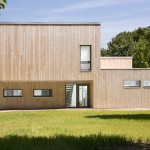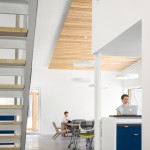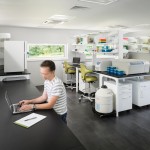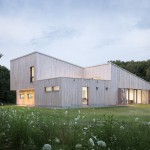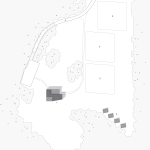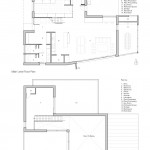Warren Woods Ecological Field Station
Project Name
The University of Chicago’s Warren Woods Ecological Field Station is the first Passive House–certified laboratory in North America, and the fifth in the world. Nestled in 42 acres of land adjacent to Warren Woods State Park in Berrien County, Michigan, the 2,200-square-foot building relates to the climate and functional requirements of the site. The long shed roof volume creates a compact simple building form responds to solar orientation, visitor access and views back to the site. The result is a highly-efficient and self contained building that is in harmony with its surrounding environment.
The Department of Ecology and Evolution at the University of Chicago set out to incorporate an extremely high standard of sustainability for the remote field station, laboratory, and cabins. Used by the Department for research projects, educational programs and classes, as well as departmental retreats and events, the facility offers a fully equipped research laboratory where small groups of students and researchers will grow, process, and study plants. The facility also includes a seminar space, bathrooms, a kitchenette, and three sleeping cabins adjacent to an environmentally significant beech maple climax forest.
The design approach for the field station was to create a compact, highly insulated building shell that makes use of passive solar gains, resulting in a highly energy-efficient facility. The metric used to determine the target level of energy performance for the building was the German Passive House Standard, which represents a 90% improvement on the building’s space heating loads from code-complaint construction.
The laboratory presented a unique challenge to certifying the building given the complex technical requirements and the high levels of heat generated by the research equipment, including plant growth chambers, a negative 80°C freezer, incubators and tools for DNA extraction. Accordingly, the building’s space heating concept was to utilize the lab’s high internal loads and redistributed them into the rest of the building, with heat transfer ducts installed between the spaces to help distribute the warm air.


